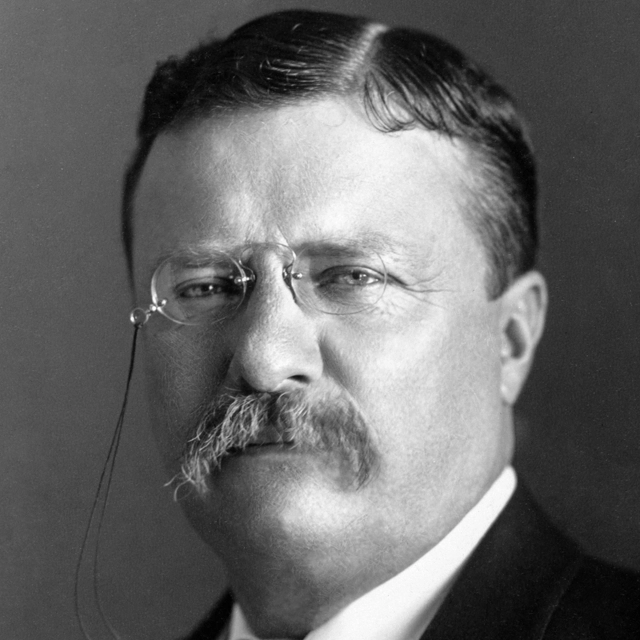The Art of Communicating Audiobook Summary
Zen master Thick Nhat Hanh, bestselling author of Peace is Every Step and one of the most respected and celebrated religious leaders in the world, delivers a powerful path to happiness through mastering life’s most important skill.
How do we say what we mean in a way that the other person can really hear?
How can we listen with compassion and understanding?
Communication fuels the ties that bind, whether in relationships, business, or everyday interactions. Most of us, however, have never been taught the fundamental skills of communication–or how to best represent our true selves. Effective communication is as important to our well-being and happiness as the food we put into our bodies. It can be either healthy (and nourishing) or toxic (and destructive).
In this precise and practical guide, Zen master and Buddhist monk Thick Nhat Hanh reveals how to listen mindfully and express your fullest and most authentic self. With examples from his work with couples, families, and international conflicts, The Art of Communicating helps us move beyond the perils and frustrations of misrepresentation and misunderstanding to learn the listening and speaking skills that will forever change how we experience and impact the world.
Other Top Audiobooks
The Art of Communicating Audiobook Narrator
Dan Woren is the narrator of The Art of Communicating audiobook that was written by Thich Nhat Hanh
Thich Nhat Hanh was a world-renowned Buddhist Zen master, poet, author, scholar, and activist for social change, who was nominated for the Nobel Peace Prize by Dr. Martin Luther King Jr. He was the author of many bestselling books, including the classics Peace Is Every Step and The Art of Living. Through his books and retreats at the monasteries he has founded in the U.S., Europe, Asia, and Australia, he became a pre-eminent figure in contemporary Buddhism, offering teachings that are both deeply rooted in ancient wisdom and accessible to all.
Sister Chan Khong is Thich Nhat Hanh’s most senior monastic disciple and lifelong collaborator. A leading force in his engaged Buddhism programs and humanitarian projects, her books include Learning True Love and Beginning Anew.
Sister True Dedication is a former journalist and monastic Dharma Teacher ordained by Thich Nhat Hanh.
About the Author(s) of The Art of Communicating
Thich Nhat Hanh is the author of The Art of Communicating
More From the Same
- Publisher : HarperAudio
- Abraham
- American Gods [TV Tie-In]
- Dead Ringer
- House of Sand and Fog
- Prey
The Art of Communicating Full Details
| Narrator | Dan Woren |
| Length | 3 hours 18 minutes |
| Author | Thich Nhat Hanh |
| Category | |
| Publisher | HarperAudio |
| Release date | August 13, 2013 |
| ISBN | 9780062283771 |
Subjects
The publisher of the The Art of Communicating is HarperAudio. includes the following subjects: The BISAC Subject Code is Eastern, Philosophy
Additional info
The publisher of the The Art of Communicating is HarperAudio. The imprint is HarperAudio. It is supplied by HarperAudio. The ISBN-13 is 9780062283771.
Global Availability
This book is only available in the United States.
Goodreads Reviews
Tony Rogers
March 02, 2022
Update 2022This is my third time reading this book since my first review in 2015. Obviously I think the lessons are valuable yet I still say you don’t need to read the entire book to understand its message. Here are the core lessons of the book in plain language: 1. The human condition is full of suffering(feeling like shit) 2. Practice compassion (a deep concern for someone’s suffering) 3. Our goal as compassionate humans is to help others and yourself suffer less (feel like shit)4. Speak to yourself and others in a way that won’t cause suffering (feeling like shit)5. Write to yourself and others in a way that won’t cause suffering (feeling like shit)6. When you suffer (feel like shit) return home, which is your inner self. Practice mindful breathing, good internal dialogue and mindful walking 🚶♂️ Original review 2015Although I probably won't read this book in its entirety again, I did find value in it. The first few chapters drilled home the idea that I need to communicate ( write, speak, listen) to others out of complete compassion and understanding. It also taught that when I communicate the ultimate goal is to cause the receiver of my communication to experience less suffering, which to me, is a brilliant way of filtering all my communication with others from here on out.I particularly liked these statements and ideas from the book as well:You absorb the thoughts, speech, and actions you produce and those contained in the communications of those around you. That is a form of consumption.In a relationship, we are nourishment for each other. So we have to select the kind of food we offer the other person, the kind of food that can help our relationship thrive. Everything – including love, hate, and suffering – needs food to continue. If suffering continues, it’s because we keep feeding our suffering. Every time we speak without mindful awareness, we are feeding our suffering. With mindful awareness, we can look into the nature of our suffering and find out what kind of food we have been supplying to keep it alive. When we find the source of nourishment for our suffering, we can cut off that supply, and our suffering will fade. Many of us spend a lot of time in meetings or e-mailing with others, and not a lot of time communicating with ourselves. The result is that we don’t know what is going on within us. It may be a mess inside. How, then, can we communicate with another person? We don’t tell our fear to go away; we recognize it. We don’t tell our anger to go away; we acknowledge it. These feelings are like a small child tugging at our sleeves. Pick them up and hold them tenderly. Acknowledging our feelings without judging them or pushing them away, embracing them with mindfulness, is an act of homecoming. When you’ve understood your suffering, you suffer less, and you are capable of understanding another person’s suffering much more easily. When you can recognize the suffering of another person and see how that suffering came about, compassion arises. You no longer have the desire to punish or blame the other person. You can listen deeply, and when you speak there is compassion and understanding in your speech. Usually when anger manifests, we want to confront the person we think is the source of our anger. We’re more interested in setting that person straight than in taking care of the more urgent matter, which is our own anger. We are like the person whose house is on fore who goes chasing after the arsonist instead of going home to put out the fire. Meanwhile, the house continues to burn. All in all, I found some really good points sprinkled here and there. Especially in the first half of the book. Wasn't quite what I was expecting though.
Hákon
January 03, 2018
This is the first book by Thich Nhat Hanh that I read, and I think it is interesting. It is, as one might guess from the title, about the way we communicate with others, and what he has to say about it makes a lot of sense. A man that is very hostile in the way he speaks to others is likely to get the same in return, and vice versa. I think the author is right that we really should try to communicate positively rather than negatively. Call me a tree hugger if you want, but I think we might actually get a more stable world if enough people went that way.Occationally I felt like the editor should have asked the author how, and what do you mean, because it is not always clear. Most of the time that is not a problem, but it does happen, and I think that is the biggest flaw in this otherwise excellent book.
Yesenia
November 04, 2019
A lotus for you, a Buddha to be...
Ivan
June 11, 2018
"Želim razumjeti tvoje teškoće i tvoju patnju.Želim te saslušati jer te želim voljeti."Hvala Tićo
Katrina
September 22, 2014
p.4-5 – The energy of mindfulness is a necessary ingredient in healthy communication. Mindfulness requires letting go of judgment, returning to an awareness of the breath and the body, and bringing your full attention to what is in you and around you. This helps you notice whether the thought you just produced is healthy or unhealthy, compassionate or unkind. p.5 – You absorb the thoughts, speech, and actions you produce and those contained in the communications of those around you. That is a form of consumption.p.7 – In a relationship, we are nourishment for each other. So we have to select the kind of food we offer the other person, the kind of food that can help our relationship thrive. Everything – including love, hate, and suffering – needs food to continue. If suffering continues, it’s because we keep feeding our suffering. Every time we speak without mindful awareness, we are feeding our suffering. With mindful awareness, we can look into the nature of our suffering and find out what kind of food we have been supplying to keep it alive. When we find the source of nourishment for our suffering, we can cut off that supply, and our suffering will fade. p.14 – Many of us spend a lot of time in meetings or e-mailing with others, and not a lot of time communicating with ourselves. The result is that we don’t know what is going on within us. It may be a mess inside. How, then, can we communicate with another person? p.17 – When we begin to practice mindful awareness, we start the path home to ourselves. Home is the place where loneliness disappears. When we’re home, we feel warm, comfortable, safe, fulfilled. We’ve gone away from out homes for a long time, and out homes have become neglected. But the path back home is not long. Home is inside us. Going home requires only sitting down and being with yourself, accepting the situation as it is. Yes, it might be a mess in there, but we accept it because we know we have left home for a long time. So now we’re home. With our in-breath and our out-breath, our mindful breathing, we begin to tidy up our homes. p.19 – If we’re overloaded with fear, anger, regret, or anxiety, we’re not free, no matter what position we hold in society or how much money we have. Real freedom only comes when we’re able to release our suffering and come home. Freedom is the most precious thing there is. It is the foundation of happiness, and it is available to us with each conscious breath. p.21 – When we stop talking and thinking and we listen mindfully to ourselves, one thing we will notice is our greater capacity and opportunities for joy. The other thing that happens when we stop thinking and talking and we begin listening to ourselves is that we notice the suffering present in our lives. Mindfulness lets us listen to the pain, the sorrow, and the fear inside. When we see that some suffering or some pain is coming up, we don’t try to run away from it. In fact, we have to go back and take care of it. We’re not afraid of being overwhelmed, because we know how to breathe and how to walk so as to generate enough energy of mindfulness to recognize and take care of the suffering. p.22 – We don’t have to try to get away from our suffering. We don’t have to cover up what is unpleasant in us. In fact, we try to be there for ourselves, to understand, so that we can transform. Please do come back home and listen. If you don’t communicate well with yourself, you cannot communicate well with another person. p.26 – Home is the here and now, where all the wonders of life are already available, where the wonder that is your body is available. You can’t arrive fully in the here and the now unless you invest you whole body and mind into the present moment. If you haven’t arrived one hundred percent, stop where you are and don’t take another step. Stay there and breathe until you’re sure you have arrived one hundred percent. Then you can smile a smile of victory. p.28 – We don’t tell our fear to go away; we recognize it. We don’t tell our anger to go away; we acknowledge it. These feelings are like a small child tugging at our sleeves. Pick them up and hold them tenderly. Acknowledging our feelings without judging them or pushing them away, embracing them with mindfulness, is an act of homecoming.p.30 – But there is a way of getting in touch with the suffering without being overwhelmed by it. We try to avoid suffering, but suffering is useful. We need suffering. Going back to listen and understand our suffering brings about the birth of compassion and love. If we take the time to listen deeply to our own suffering, we will be able to understand it. Any suffering that has not been released and reconciled will continue. Until it has been understood and transformed, we carry with us not just our own suffering but also that of our parents and our ancestors. Getting in touch with the suffering that has been passed down to us helps us understand our own suffering. Understanding suffering gives rise to compassion. Love is born, and right away we suffer less. If we understand the nature and the roots of our suffering, the path leading to the cessation of the suffering will appear in front of us. Knowing there is a way out, a path, brings us relief, and we no longer need to be afraid. p.34 – When you’ve understood your suffering, you suffer less, and you are capable of understanding another person’s suffering much more easily. When you can recognize the suffering of another person and see how that suffering came about, compassion arises. You no longer have the desire to punish or blame the other person. You can listen deeply, and when you speak there is compassion and understanding in your speech. p.39 – It’s helpful to remember at the beginning of every communication with another person that there is a Buddha inside each of us. “The Buddha” is just a name for the most understanding and compassionate person it’s possible to be. p.93 – One reason we have trouble communicating with others is that we often try to communicate when we are angry. We suffer, and we don’t want to be alone with all that suffering. We believe that we are angry because of something others did, and we want then to know it. Anger has urgency in it. We want to let others know right away what the problem with them is. p.94 – But when we’re angry, we aren’t lucid. Acting while angry can lead to a lot of suffering and can escalate the situation. That doesn’t mean we should suppress our anger. We shouldn’t pretend that everything is fine when it isn’t. It’s possible to feel and engage with our anger in a healthy and compassionate manner. When anger is there, we should handle it with tenderness because our anger is us. Mindful breathing helps us reconsider our anger and treat it tenderly. Mindful energy embraces the energy of anger. After you have sat with mindful awareness and calmed your anger, you can look deeply into the anger to see its nature and where is has come from. What is the root of that anger? p.96 – Usually when anger manifests, we want to confront the person we think is the source of our anger. We’re more interested in setting that person straight than in taking care of the more urgent matter, which is our own anger. We are like the person whose house is on fore who goes chasing after the arsonist instead of going home to put out the fire. Meanwhile, the house continues to burn. “I suffer, please help.” You may phone the other person once you have calmed your anger, but only when you can calmly tell him or her that you suffer and you want help. Asking for help when we’re angry is very difficult, but it allows others to see your suffering instead of just your anger. They will see that suffering causes the anger, and then communication and healing can begin. p.97 – When we have a rift or an estrangement from someone we care about, both people suffer. If we didn’t care deeply about the other person, the rift would not be so painful. It’s the people we care most about who trigger our greatest suffering. When someone has caused you a lot of pain, you may not even want to look at or be in the same room as that person, because you will suffer. With awareness, you can understand your own suffering and recognize the suffering in the other person. You may even understand that the reason that person suffers so much is because he or she doesn’t know how to handle the suffering. His suffering spills out, and you are its victim. Maybe he doesn’t want to make you suffer, but he doesn’t know another way. he can’t understand and transform his suffering, and so he makes the people around him suffer too, even when that’s not his intention. Because he suffers, you suffer. He doesn’t need punishment; he needs help. You can help by acknowledging the suffering in him. p.142 – Everything we say and do bears our signature. We can’t say, “That’s not my thought.” We’re responsible for our own communication. So if it happens that yesterday I said something what wasn’t right, I have to do something today to transform it. The French philosopher Jean-Paul Sartre said, “Man is the sum of all his actions.” The value of our lives depends on the quality of our thinking, our speech, and our actions. p.144-45 – Communication isn’t static. Even if yesterday you produced a thought of anger and hate, today you can produce a thought in the opposite direction, a thought of compassion and tolerance. As soon as we produce the new thought, it can very quickly catch up with yesterday’s thought and neutralize it. Using right communication today can help us heal the past, enjoy the present, and prepare the ground for a good future. p.150 – Everyone one of us has a wounded child within who needs our care and love. But we run away from our inner child because we’re afraid of the suffering. In addition to listening to others with compassion, we must learn also listen to the wounded child inside us. That little child needs our attention. Take time to go back and tenderly embrace the wounded child within you. You can talk to the child with the language of love. “Dear one, in the past, I left you alone. I’ve gone away from you for so long. I’m sorry. Now I have come back to take care of you, to embrace you. I know you suffer so much, and I have neglected you. But now I’ve learned the way to take care of you. I am here now.’ We should talk to our child several times a day for healing to take place. The little child has been left alone for a long time, so we need to begin this practice right away. Go back to your inner child every day and listen for five or ten minutes, and healing will take place. p.152 – My dear, I know you have suffered a lot over the past many years. I have not been able to help you – in fact, I have made the situation worse. It is not my intention to make you suffer. Maybe I’m not skillful enough. Maybe I tried to impose my ideas on you. In the past I thought you made me suffer. Now I realize that I have been responsible for my own suffering. I promise to do my best to refrain from saying things or doing things that make you suffer. Please tell me what is in your heart. You need to help me; otherwise it is not possible for me to do it. I can’t do it alone. You have nothing to risk by writing this letter. You can even decide later whether to send it. But whether you send it or not, you will find that the person who finishes writing the letter is not the same person who began it – peace, understanding, and compassion have transformed you.
Lexy
January 31, 2021
I thought that this book was informational
Barry
June 11, 2022
Incredible. Highly recommended
ANNEstories
December 24, 2020
This book reminds me of Richard Carlson’s Don’t Sweat The Small Stuff. A lot of compassionate communication and mindful awareness of yourself and the people around you to create a harmonious way of life. The art of deep listening of your thoughts and understanding your own suffering in the pursuit of Happiness. Because when you understand your suffering, you suffer less. And Suffering is needed to grow Happiness. They always go together. The Yin and the Yang. That it takes a lot of maturity to joyful living. Thich Nhat Hanh preached to be careful with the words you put out when the tension is high. In short, a lot of self-control, self-control and more self-control. The author further emphasized Mindful breathing- focus on the non talking and non thinking. It gives Higher opportunity for Joy. The usual Stop and Focus on the now. Sitting down and being w yourself. Hence, Mindful Walking- connect the body and the mind.„“Food. What we consume w our eyes, ears, nose and our body are also food. The conversations, environment, aroma, etc. Are we consuming healthy food that help us grow?Home is the place where loneliness disappears.Sit down and do nothing. ~Nelson MandelaDouble tongue- changing content for own advantage.Speak in terms that people can understand.Speak accdg to the understanding of the person listening. Communicate lovingly w yourself. Be there for yourself.With mindfulness, compassion arises. You are your thoughts, speech and action.
Annie
January 23, 2022
A man is pointing above him and says that is up. On the opposite side of the world, a man is pointing in the other direction and says that is up. They are pointing in different directions when pointing up but are both speaking the relative truth. This book on communication is basic but deep. It leads you to ponder whether you are communicating the appropriate information for the given situation or person.
Ying Ying
October 09, 2017
As with Thich Nhat Hanh's other books, reading "The Art of Communicating" feels like meditating. This book is a guide to deep listening and loving speech.
Sabrinac
September 23, 2018
I am the byproduct of a violent upbringing. I really struggle to use language that is kind and inviting. I want to go to war with everyone because for me, life has been a series of battles. This is unfortunate because most of the time people are not trying to go to war with me. I end up hurting people and in turn finding people to hurt me so this can go on forever. And I’m done with it. It’s really powerful to just learn to exist in your feelings. The Art of Communicating is perfect for someone like me who’s in a transition period where very basic things like saying, “I am here for you,” are as powerful in print as they are in practice. I don’t expect this book to change me or anyone over night. But what is change without the decision to do things differently—while also knowing what to do to make this happen.
Dharanyachellapandian
July 06, 2020
I began reading this by chance. I did not have much expections once I grabbed it. I was wondering what would be itscontents. But I just wanna give a try. OMG!! This book made a lasting impact in my life. He helped me reenter my past experiences where actually my communication broke some relationship in my life. After reading this, I started "Begining anew" the relations I had earlier with new Josh and new me. I have become mindful in my communication now. Hope this helps!!! 😊
Gwendolyn
May 03, 2019
i was thinking that i am not as good at listening as i once thought i was. that though i am a writer and live inside of words and yet i a do not communicate as clearly as i once thought i did. there are so many misunderstandings and wrong perceptions in my relationships. my loved ones have been feeling unheard. and i have been feeling deeply misunderstood. if this sounds at all familiar, yes this book.it is all about mindfulness. i love the idea of coming home that is brought up and circled back to time and again:“when we begin to practice mindful awareness, we start the path home to ourselves. home is the place where loneliness disappears. when we’re home we feel warm, comfortable, safe, fulfilled… home is inside us. …please do come back home and listen. if you don’t communicate well with yourself, you cannot communicate with another person.” so i kept thinking of the title of raymond carver’s book, “where i’m calling from.” where am i listening and speaking from? from a centered, loving, safe place? or from a chaotic responding jumble of thoughts, feelings, judgements misperceptions, ego (three deep breaths and then we can begin) i want especially to be able to say i can’t talk about this right now i need a minute. and also to be so much better at deeply listening and understanding. with compassion and acceptance. and not ego. intention is everything. there is a lot to take in here. the ideas require a focused tuning in and i feel that the knowing will work itself down slowly, through the sediment, so to speak. i recommend taking your time with it, allowing, giving it space. and lots of patience and practice. maybe even reading it more than once or twice. useful to growth and better humaning.
Frequently asked questions
Listening to audiobooks not only easy, it is also very convenient. You can listen to audiobooks on almost every device. From your laptop to your smart phone or even a smart speaker like Apple HomePod or even Alexa. Here’s how you can get started listening to audiobooks.
- 1. Download your favorite audiobook app such as Speechify.
- 2. Sign up for an account.
- 3. Browse the library for the best audiobooks and select the first one for free
- 4. Download the audiobook file to your device
- 5. Open the Speechify audiobook app and select the audiobook you want to listen to.
- 6. Adjust the playback speed and other settings to your preference.
- 7. Press play and enjoy!
While you can listen to the bestsellers on almost any device, and preferences may vary, generally smart phones are offer the most convenience factor. You could be working out, grocery shopping, or even watching your dog in the dog park on a Saturday morning.
However, most audiobook apps work across multiple devices so you can pick up that riveting new Stephen King book you started at the dog park, back on your laptop when you get back home.
Speechify is one of the best apps for audiobooks. The pricing structure is the most competitive in the market and the app is easy to use. It features the best sellers and award winning authors. Listen to your favorite books or discover new ones and listen to real voice actors read to you. Getting started is easy, the first book is free.
Research showcasing the brain health benefits of reading on a regular basis is wide-ranging and undeniable. However, research comparing the benefits of reading vs listening is much more sparse. According to professor of psychology and author Dr. Kristen Willeumier, though, there is good reason to believe that the reading experience provided by audiobooks offers many of the same brain benefits as reading a physical book.
Audiobooks are recordings of books that are read aloud by a professional voice actor. The recordings are typically available for purchase and download in digital formats such as MP3, WMA, or AAC. They can also be streamed from online services like Speechify, Audible, AppleBooks, or Spotify.
You simply download the app onto your smart phone, create your account, and in Speechify, you can choose your first book, from our vast library of best-sellers and classics, to read for free.
Audiobooks, like real books can add up over time. Here’s where you can listen to audiobooks for free. Speechify let’s you read your first best seller for free. Apart from that, we have a vast selection of free audiobooks that you can enjoy. Get the same rich experience no matter if the book was free or not.
It depends. Yes, there are free audiobooks and paid audiobooks. Speechify offers a blend of both!
It varies. The easiest way depends on a few things. The app and service you use, which device, and platform. Speechify is the easiest way to listen to audiobooks. Downloading the app is quick. It is not a large app and does not eat up space on your iPhone or Android device.
Listening to audiobooks on your smart phone, with Speechify, is the easiest way to listen to audiobooks.






























